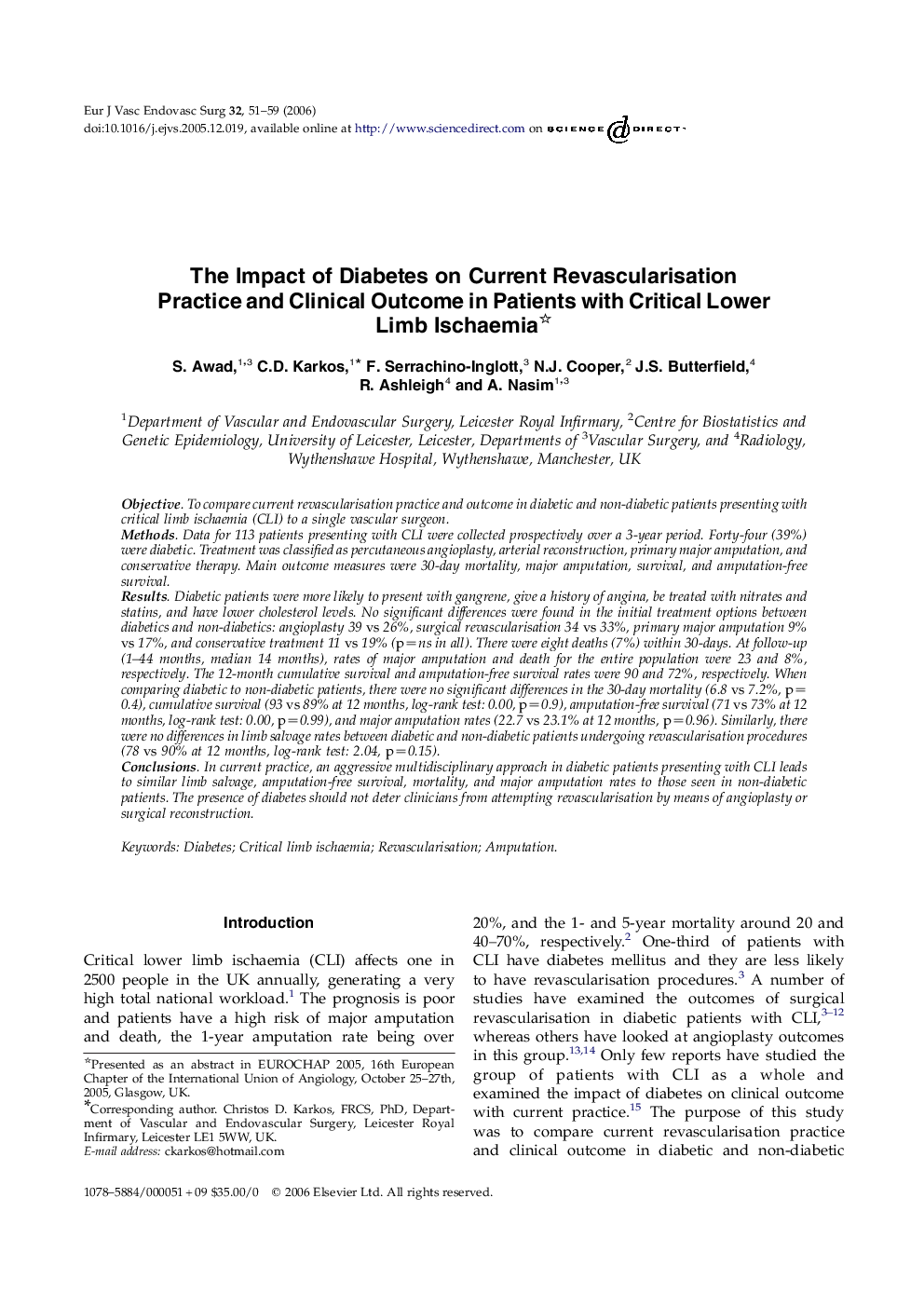| کد مقاله | کد نشریه | سال انتشار | مقاله انگلیسی | نسخه تمام متن |
|---|---|---|---|---|
| 2914781 | 1575554 | 2006 | 9 صفحه PDF | دانلود رایگان |

ObjectiveTo compare current revascularisation practice and outcome in diabetic and non-diabetic patients presenting with critical limb ischaemia (CLI) to a single vascular surgeon.MethodsData for 113 patients presenting with CLI were collected prospectively over a 3-year period. Forty-four (39%) were diabetic. Treatment was classified as percutaneous angioplasty, arterial reconstruction, primary major amputation, and conservative therapy. Main outcome measures were 30-day mortality, major amputation, survival, and amputation-free survival.ResultsDiabetic patients were more likely to present with gangrene, give a history of angina, be treated with nitrates and statins, and have lower cholesterol levels. No significant differences were found in the initial treatment options between diabetics and non-diabetics: angioplasty 39 vs 26%, surgical revascularisation 34 vs 33%, primary major amputation 9% vs 17%, and conservative treatment 11 vs 19% (p=ns in all). There were eight deaths (7%) within 30-days. At follow-up (1–44 months, median 14 months), rates of major amputation and death for the entire population were 23 and 8%, respectively. The 12-month cumulative survival and amputation-free survival rates were 90 and 72%, respectively. When comparing diabetic to non-diabetic patients, there were no significant differences in the 30-day mortality (6.8 vs 7.2%, p=0.4), cumulative survival (93 vs 89% at 12 months, log-rank test: 0.00, p=0.9), amputation-free survival (71 vs 73% at 12 months, log-rank test: 0.00, p=0.99), and major amputation rates (22.7 vs 23.1% at 12 months, p=0.96). Similarly, there were no differences in limb salvage rates between diabetic and non-diabetic patients undergoing revascularisation procedures (78 vs 90% at 12 months, log-rank test: 2.04, p=0.15).ConclusionsIn current practice, an aggressive multidisciplinary approach in diabetic patients presenting with CLI leads to similar limb salvage, amputation-free survival, mortality, and major amputation rates to those seen in non-diabetic patients. The presence of diabetes should not deter clinicians from attempting revascularisation by means of angioplasty or surgical reconstruction.
Journal: European Journal of Vascular and Endovascular Surgery - Volume 32, Issue 1, July 2006, Pages 51–59